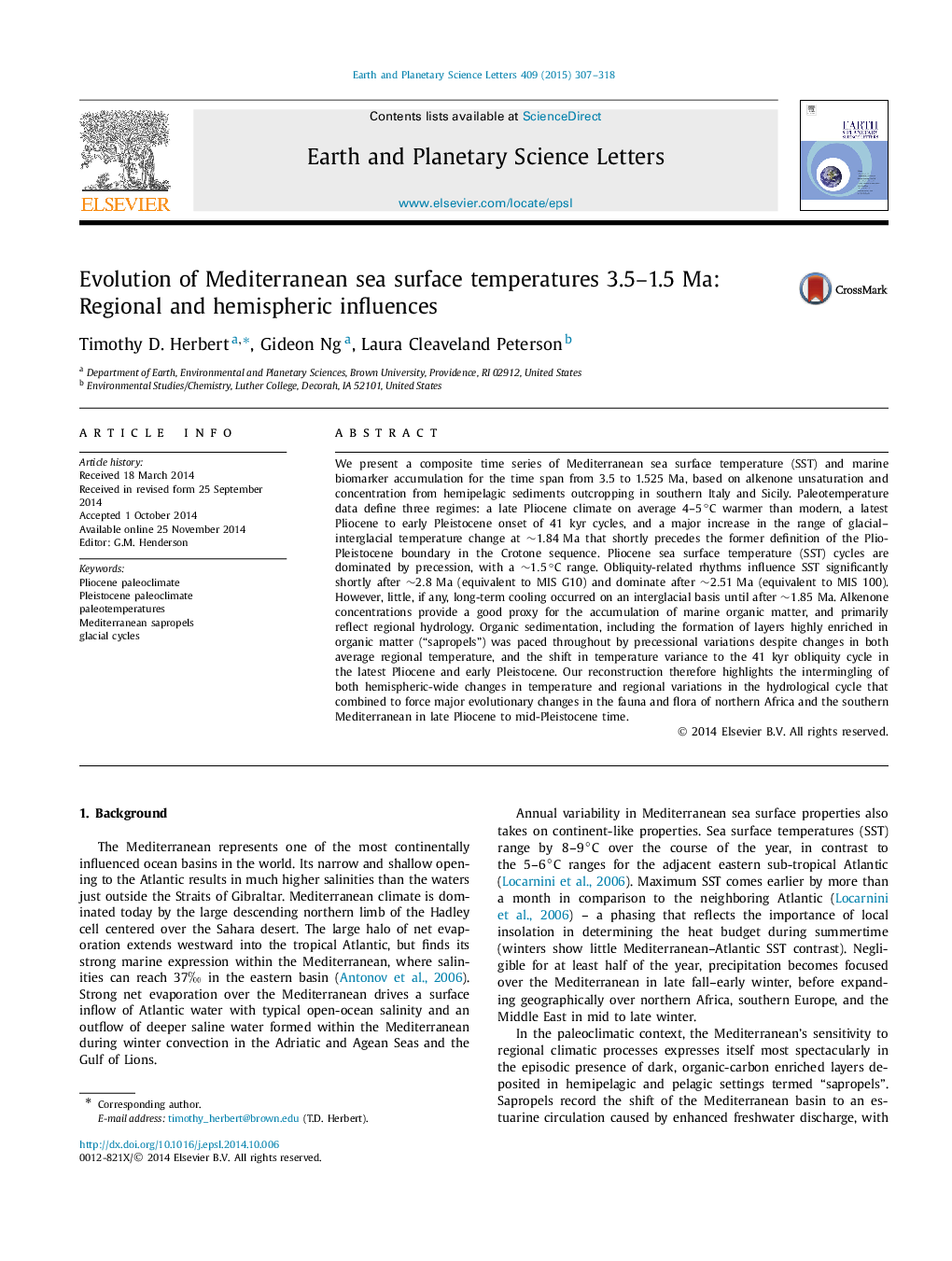| کد مقاله | کد نشریه | سال انتشار | مقاله انگلیسی | نسخه تمام متن |
|---|---|---|---|---|
| 6428865 | 1634747 | 2015 | 12 صفحه PDF | دانلود رایگان |

- We present a continuous 2 Myr-long record of Mediterranean sea surface temperatures.
- Temperature spectra show precession dominance before 2.8 Ma and obliquity after.
- Mediterranean hydrology was dominated by precessional forcing throughout.
- Glacial coolings intensified after â¼1.85 Ma.
- Results support the variability hypothesis for biotic evolution in northern Africa.
We present a composite time series of Mediterranean sea surface temperature (SST) and marine biomarker accumulation for the time span from 3.5 to 1.525 Ma, based on alkenone unsaturation and concentration from hemipelagic sediments outcropping in southern Italy and Sicily. Paleotemperature data define three regimes: a late Pliocene climate on average 4-5°C warmer than modern, a latest Pliocene to early Pleistocene onset of 41 kyr cycles, and a major increase in the range of glacial-interglacial temperature change at â¼1.84 Ma that shortly precedes the former definition of the Plio-Pleistocene boundary in the Crotone sequence. Pliocene sea surface temperature (SST) cycles are dominated by precession, with a â¼1.5°C range. Obliquity-related rhythms influence SST significantly shortly after â¼2.8 Ma (equivalent to MIS G10) and dominate after â¼2.51 Ma (equivalent to MIS 100). However, little, if any, long-term cooling occurred on an interglacial basis until after â¼1.85 Ma. Alkenone concentrations provide a good proxy for the accumulation of marine organic matter, and primarily reflect regional hydrology. Organic sedimentation, including the formation of layers highly enriched in organic matter (“sapropels”) was paced throughout by precessional variations despite changes in both average regional temperature, and the shift in temperature variance to the 41 kyr obliquity cycle in the latest Pliocene and early Pleistocene. Our reconstruction therefore highlights the intermingling of both hemispheric-wide changes in temperature and regional variations in the hydrological cycle that combined to force major evolutionary changes in the fauna and flora of northern Africa and the southern Mediterranean in late Pliocene to mid-Pleistocene time.
Journal: Earth and Planetary Science Letters - Volume 409, 1 January 2015, Pages 307-318